The Maniototo in Central Otago is among the most remote and least known of New Zealand’s dairy farming regions.
But life is so good there that the Jeffries family have just committed to another 10 years on the farm where they contract-milk.
Luke Jeffries his wife Anna, a former Canterbury schoolteacher, moved to the sparsely populated Maniototo Plain 10 years ago with their two children.
Since then they’ve had three more children and have become part of a community they love, doing a job they love.
“This will be where we end up now. It’s just quite lucky that we found it,” Luke says.
“A lot of people spend their whole lives traipsing round trying to find it and don’t, so we’ve been lucky to find an area we like and a farm we really like.”
Anna agrees: “We were totally new to the Maniototo, where farming is so different.
“It was kind of like, ‘This is quite scary but it feels right’, if that makes sense. It’s like a dream job.”
The Jeffries are contract milkers on a 930-cow, 400ha, equity partnership-owned farm at Puketoi, about half an hour south of Ranfurly.
Maniototo Plain, usually just called The Maniototo, is an elevated region known for its harsh, dry climate. Temperatures range from more than 30degC in summer down to -15degC in winter.
The growing season is short, but thanks to irrigation, pasture growth is vigorous and the plains, once the preserve of dryland sheep farming, are now home to 12,000 cows and 11 sheds.
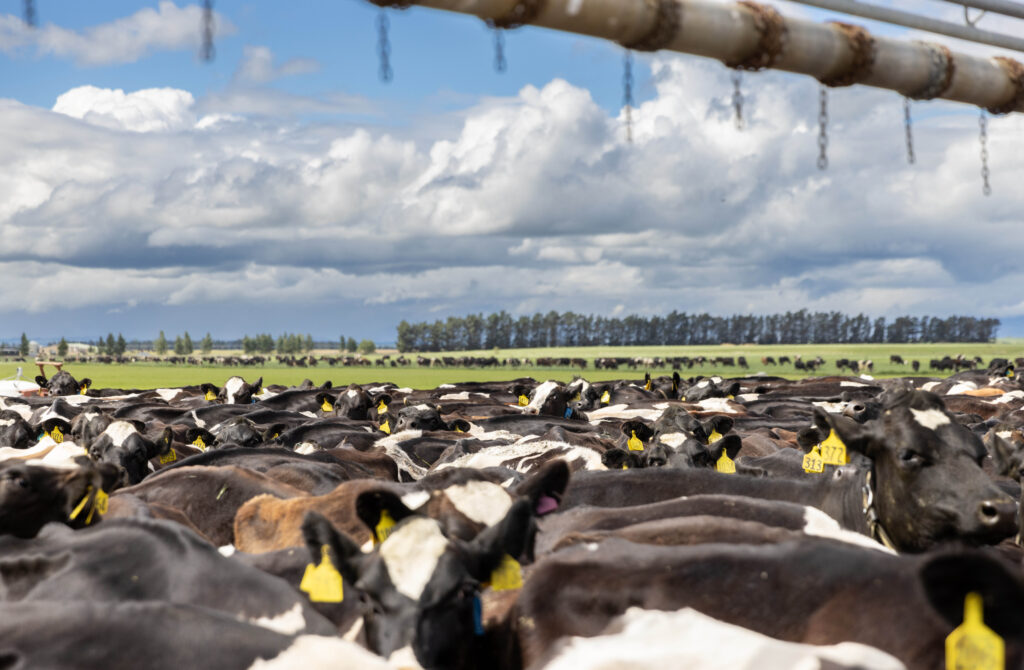
Luke was born in England. His parents parted when he was quite young and when he was about 16 his father emigrated to New Zealand. Luke decided to go with him, ending up in Balclutha, South Otago.
“He was managing a dairy farm down there in 2001-2002. I went to South Otago High but did very little time at school. Mostly it was spent milking cows and driving tractors,” Luke says.
He returned to the United Kingdom and completed a Bachelor of Agricultural and Land Science at Hartpury College, but felt a pull from the other side of the world.
“My mother got very excited that I might become a land agent in the UK, don a tweed hat and never ever leave, but I ended up coming back over here.”
He worked for Roel Robbin on a 2000-cow property at Oxford in Canterbury and one of his workmates was Anna’s brother.
“He invited me back for a family dinner and on the way into Christchurch I asked, ‘Have you got any brothers and sisters?’ He said, ‘Yes, I’ve got six,’ and that’s how I met Anna.”
Anna’s family used to farm in Waitaki Valley but sold the farm to Meridian Energy, which had plans to build a huge power scheme in the region.
The project didn’t go ahead but by then the family had moved to Christchurch. Anna became a schoolteacher and was teaching at Oxford Area School when she met Luke.
They worked on two local dairy farms, progressing from herd management to lower order sharemilking before the opportunity in the Maniototo came up through their accountant. He was based in Alexandra where Anna’s family had lived before moving the Waitaki Valley.
“We just happened to do a budget that we flicked through to him and he said to us, ‘I know of a job down here if you’re interested.’”
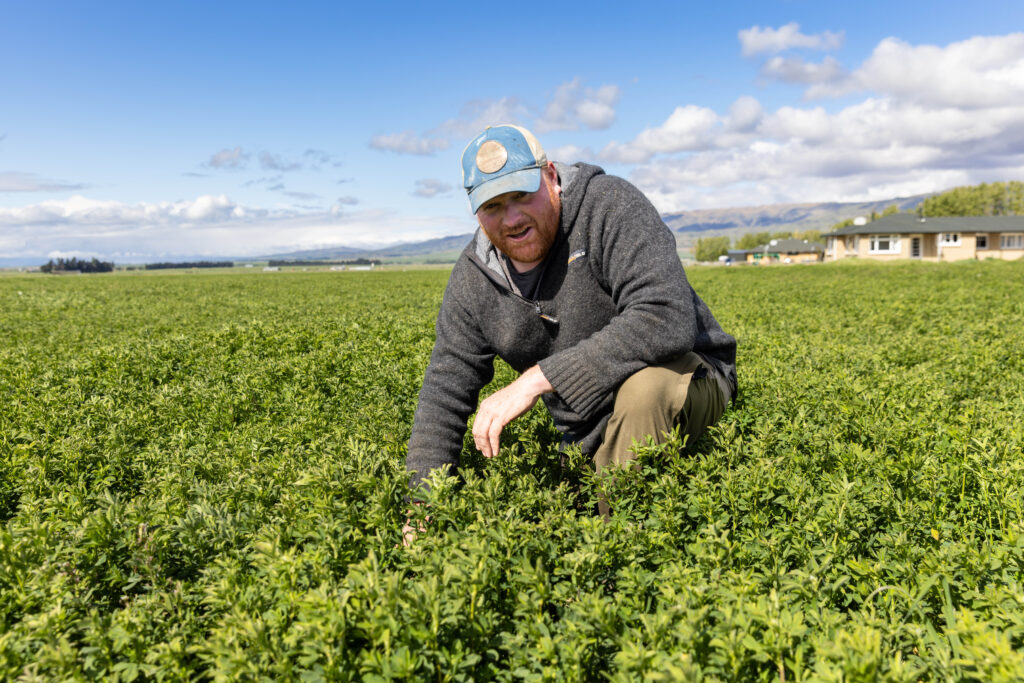
The farm had previously been owned by the late Allan Hubbard, of South Canterbury Finance fame, and had been bought by a group of equity partners, mostly local farmers, who were looking for someone to turn the somewhat rundown property around.
“There was a great lack of regrassing, it was calving 1200 cows through a 50-bale shed and they were doing 410,000kg MS,” Luke says.
Today the herd has been reduced to 930 cows and annual production has risen to 450,000kg MS, which Luke puts down to what he calls a “re-redevelopment and re-reconversion”.
“It’s not one thing, it’s a whole holistic thing. You have to have grass, you have to have genetics, it’s just trying to do the basics right and just not over-complicating the system. It hasn’t happened overnight, it’s taken 10 years.
“No regrassing had been done and some pasture had reverted to native so we’ve done a massive re-grass. Then we just worked on genetics and all the basic stuff that I think any true-blue stockman likes doing, picking bulls that we wanted, picking cows that we wanted.”
The irrigation was also upgraded with two new centre pivots replacing the tired roto-rainers.
On the driest, stoniest ground, lucerne has been planted. It gets watered by K-line a couple of times a year.
“Before, you might have got one cut off it a year and then it was just dandelions – and now we’re producing 12 tonnes.”
The lucerne is made into silage and baleage and is used as a high-protein supplement. “We have a really short growing year, we go from zero growth rate in winter to boom and it’s out of control and when we’re calving that lucerne keeps them fully fed until the grass comes.”
For the most part it’s an all-grass system with supplement in the form of lucerne silage and fodder beet at the end of the season, all made on farm. The supplement is also used feed the 350 cows that are wintered on farm.
“We’ve reduced our stocking rate but put it into winter, trying to perfect that growth period. That reduces our winter grazing costs by using that feed we’ve grown in summer and it balances out quite well.
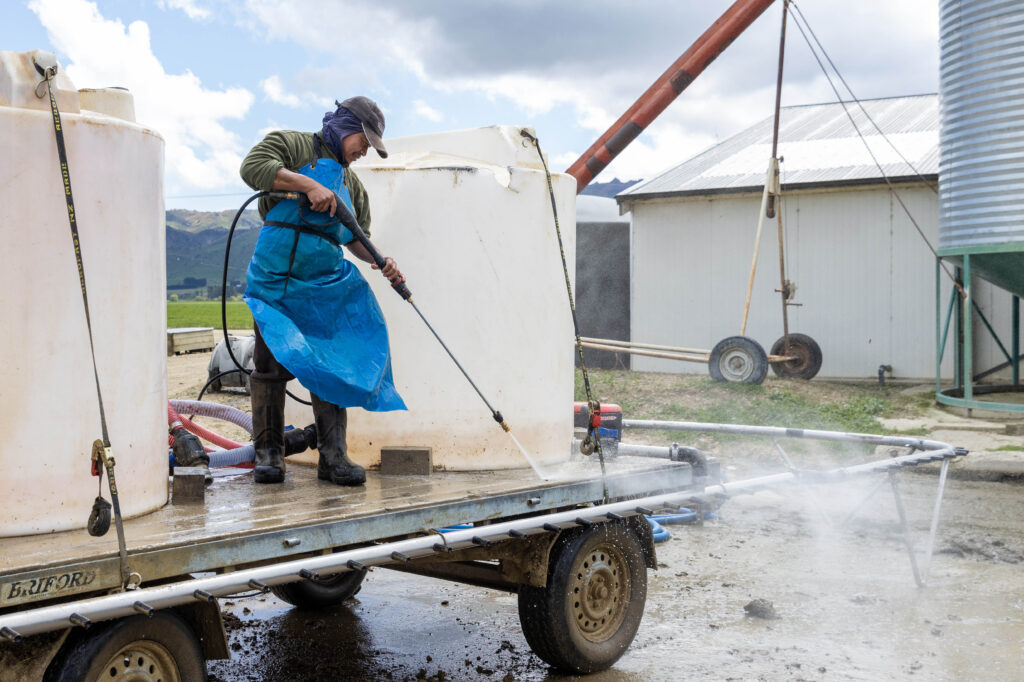
“Our cows have gone from about 360kg solids a cow up to 480kg solids a cow.”
The herd is KiwiCross, though Luke says there’s not much Jersey in them.
“We like those big cows that work on a grass-based system because that’s all we’ve got here, grass and what we grow. I think we could get another 40kg solids out of the cows if we went on to a meal system but it would cost you 30 solids to do it.”
They use sexed semen over their best cows to speed genetic improvement and to reduce the number of bobby calves, mating for three and a half weeks. As well as the 320 replacement calves, they breed 200 beef calves and 60 Friesian bulls.
The neighbouring farm is owned by one of the shareholders, who takes 100 of the beef calves while the other 100 are sold, as are the Friesian bull calves.
As well as reducing the number of bobbies, the extra calves are useful cashflow.
All the calf rearing is done by Anna, mostly alone, though they have employed a part-timer sometimes to help out.
“Bobbies are one thing in the industry that I’m just so amazed the media hasn’t cottoned on to. There’s gotta be a different way,” she says.
“I rear the calves for our business because staff is so hard to find here and that was just a nightmare. I do the calves and I can be at home with the kids.”
When their five children had all started at school, Anna tried going back to teaching, an occupation she loves, but she found combining even a three-day week with farming and family was just too difficult.
“You’re out the door at 7.30am and you don’t get home till 6pm and if you want to do it really well you’ve got to do more work after dinner and it’s just not fair on the kids. It doesn’t fit with contract milking in the Maniototo,” she says.
But Anna did need a challenge.
“I can’t just sit at home and do housework,” she says. She hit on something she describes as “pretty random”.
“I quite like shopping but I’m a bit of a Dutchie when I’m shopping and I saw all these cool pottery cups but they’re so expensive so I was like, ‘I’m gonna make my own’ – and now I know why they’re so expensive,” she laughs.
It took Anna six months to learn how to throw a pot, using YouTube for tuition, but before she could build her new hobby into something more she would need her own wheel.
That gave Luke an idea for a Christmas present, if only he knew where to find one.
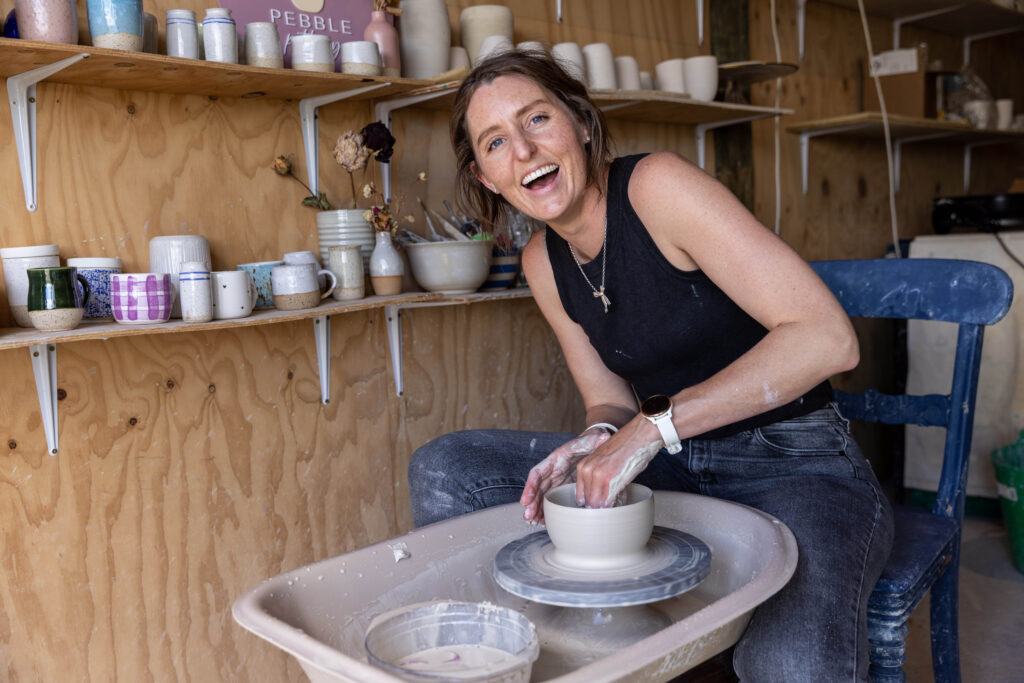
He found the answer at their children’s school in Ranfurly, when he was talking to one of the shareholders in the farm, about the school’s fund-raising calf-rearing project.
He mentioned Anna’s interest in pottery and how he’d like to find her a wheel.
They knew someone who had a whole pottery studio, who gave Anna everything.
“So, I kind of believe everything just falls into place eventually. When I went back teaching, nothing lined up, nothing balanced, it was so hard and I made the decision to not carry on and thank God I did.
“I thought I’d nailed [pottery] but then I tried glazing and that’s really hard so then I taught myself how to glaze as well,” Anna says.
At the end of last year she set up a stall in a market in Ranfurly to test demand.
“I nearly sold out, even at $55 a mug, and I thought, ‘This could be a thing.’”
Her Pebble Pottery is now on sale through Instagram and Shopify and Anna’s had several commissions, including 100 branded travel mugs for a local ram breeder who is also a shareholder in the dairy farm, to give to clients at his annual sale.
She’s also just filled an order for 100 little vases to be included in the gift boxes that a Geraldine businesswoman is selling online.
“I said to her, ‘Why did you pick me?’ and she said, ‘Because you’re a farming mum at home trying to do art.’ I think people like that story.
“I decided to stay home and try to make some pocket money off that. It’s all about appreciating the little things in life now, you don’t actually have to be in the rat race.”
That doesn’t mean Anna has given up on the classroom.
“I love teaching and I probably will go back one day,” she says.
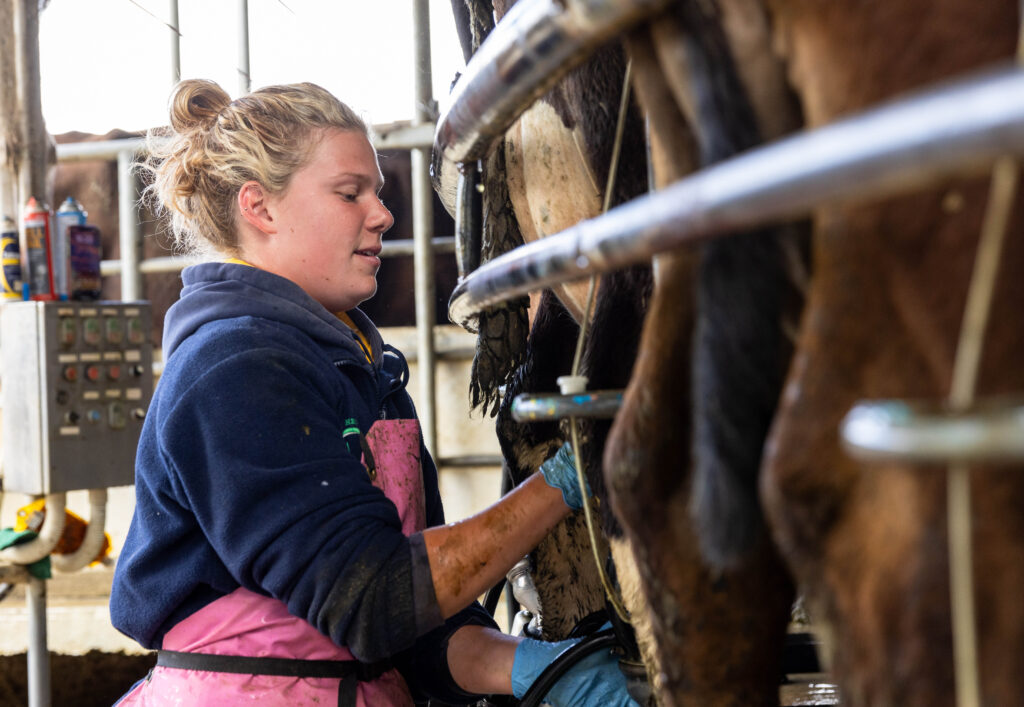
Finding good staff to come to an area as isolated as the Maniototo is a challenge the Jeffries have had to rise to – complicated by the fact that when they arrived they were considerably younger than their employees.
But their two permanent Filipino staff are clearly happy here, given herd manager Arnold Suplente has been on the farm for eight years and now his wife and son have moved here too, and Michael Viduya has been on the farm for seven years.
They also have one temporary staff member, Rose Martin, from England.
“It’s got to be a great package that suits them well for them to live here. It’s money but it’s being nice as well, doing all the extra little things — if they need something done in the house, you do it, you give them some meat and make sure they’re home by five o’clock,” Anna says.
“Anna and I do all the gardens and built them a vege patch in the winter,” Luke says. “You’ve just got to look after them, give them good facilities and give them the tools, reasonable gear, not riding round on buggered bikes that don’t go.
“The days of someone getting cows in on a two-wheeler in the rain are gone. Just have one nice four-wheeler so they can go and get the cows in and they can sit there and have a coffee on the handlebars as they’ve coming in and enjoy the sunrise.”
One of the ways Luke is making the work easier for staff is fitting Allflex collars to the herd to monitor rumination and health and for heat detection.
“The heat detection is the big one, it’s just cut their workload down. Everyone’s done calving and they’re bloody tired and you expect them to stand up there for five weeks to draft and it doesn’t always happen as it should,” he says.
“With automatic drafting you can’t make a mistake,” Anna adds.
Luke reckons farmers who don’t invest in labour-saving technology on farm will soon have trouble attracting good staff.
“One of the questions we’ll be faced with is what technology have you got on the farm to assist me in my work. They’re not going to go to farms that have four hours of K-line to shift, they’re not going to go to farms without automatic pumps and pivots, they’re not going to go to farms without collars,” he says.
Keen to embrace the latest technology, Luke has recently had sub-surface drip irrigation (SDI) put in on a paddock that’s out of reach of the centre pivots. The system automatically delivers water at root level, which avoids losses to evaporation.
It’s more expensive to set up than pivots but Luke thinks it will pay for itself by using less water and growing more grass.
“We found last year we were using anything from 15%-30% less water compared to the pivot site, most of the time 30%.
“We had an open day in January last year and we put 20mm on the sub-surface paddock and 66mm under the pivot and the difference was mind-blowing — green, much greener on the SDI.”
SDI has yet to catch on in a big way in New Zealand but is quite popular in the United States, where the technology comes from.
“It’s a hell of a system we’ve put in, with pressure monitoring, filtration, moisture sensors, and the design of it, the hydrology, is huge.
“It doesn’t blow over, it doesn’t blow away and it uses a lot less water so it’s a pretty cool product.”
Irrigation water is supplied by the Maniototo Irrigation Scheme, drawing from a large storage lake high in the hills to the south of the plains.
Construction, led by the then Ministry of Works, started in the 1980s, but the National Government in power at the time controversially abandoned the project because of a budget blowout.
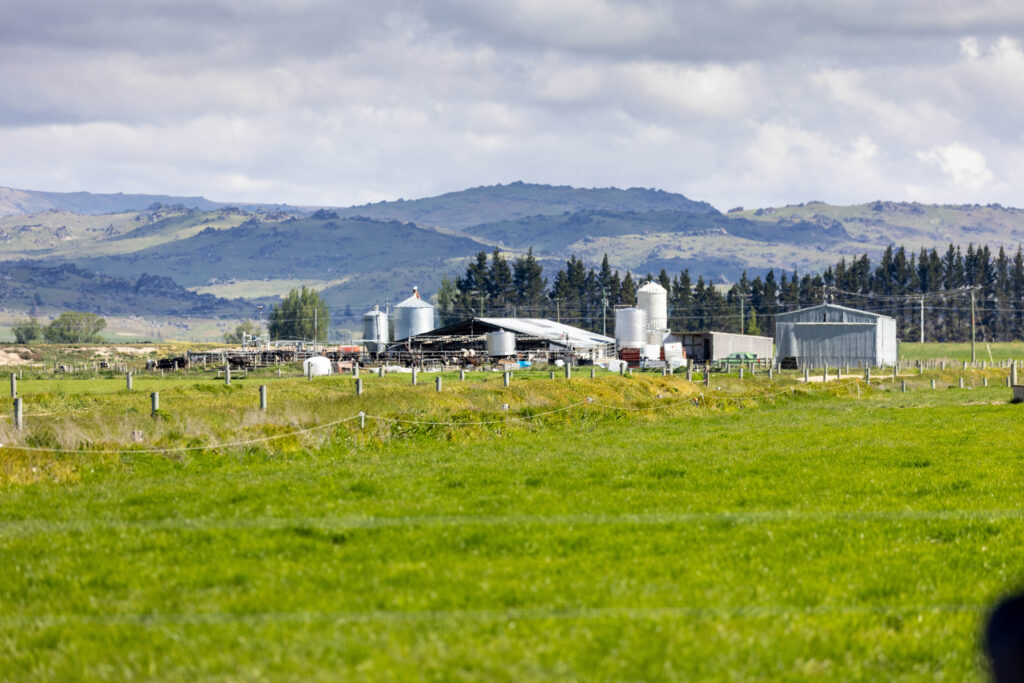
Local farmers finished a less Rolls-Royce version of the scheme themselves and today three farmer-owned companies deliver irrigation water to different parts of the Maniototo.
“It’s a really good consistent water supply – it just never runs out,” Luke says.
The Jeffries are very happy in their role as contract milkers and aren’t stressing about climbing the ladder towards farm ownership. But they are making investments in their future, including a house in Naseby that they operate as an Airbnb.
They’ve also recently taken on the lease of a 210ha dryland block 20 minutes up the road at Wedderburn, where they intend to build up a herd of 200 to 250 beef cows.
Ten years after grabbing the opportunity to move to the Maniototo, the Jeffries – Anna, Luke and their five children – feel completely at home here.
“Even if something did happen with this job we would stay in the area because it’s such a lovely community,” Anna says.
This article first appeared in our sister publication, Dairy Farmer.










